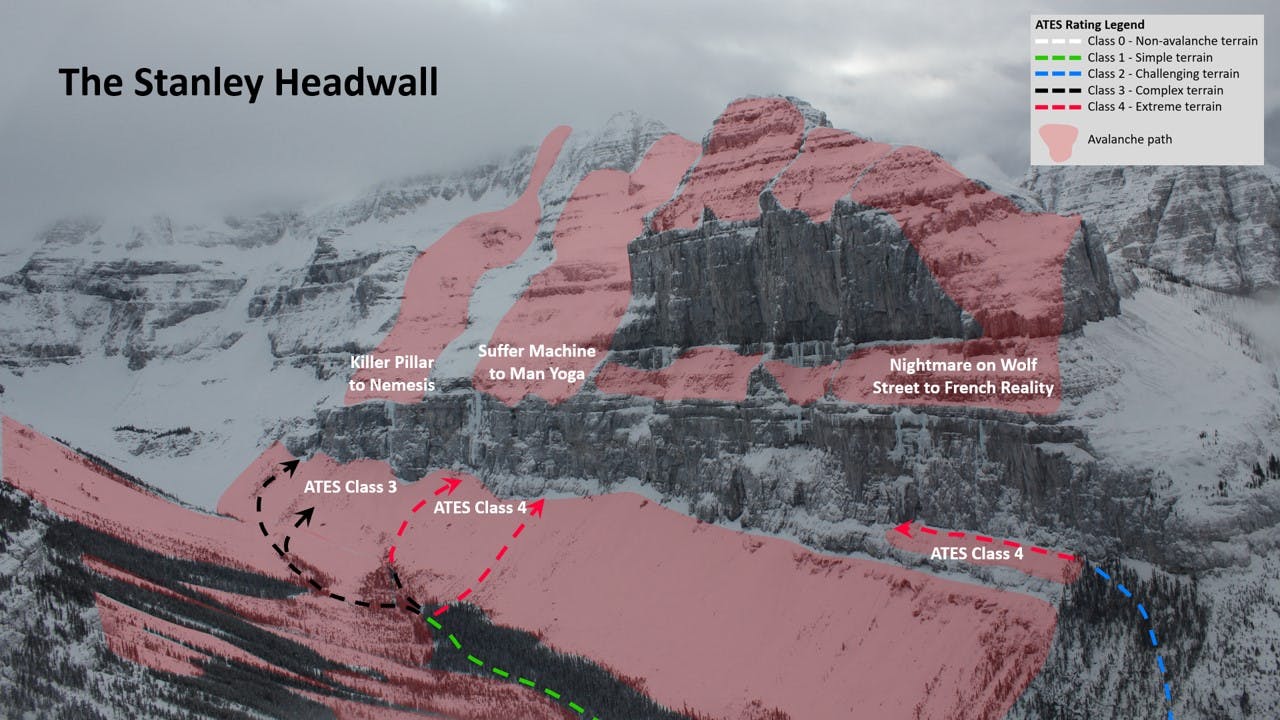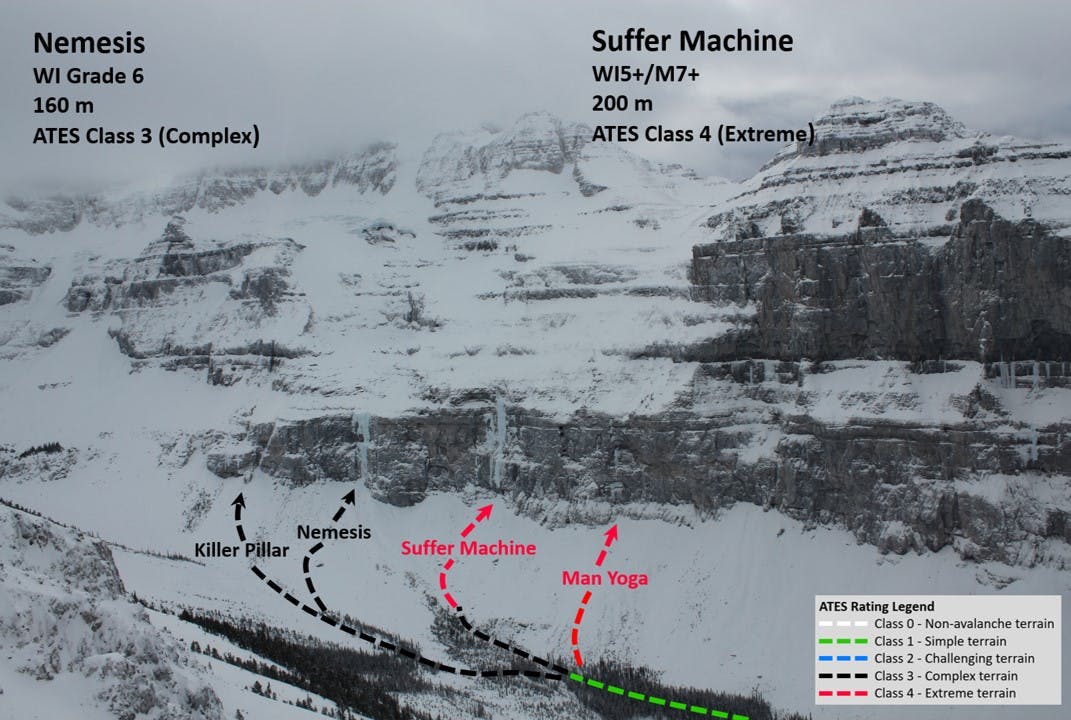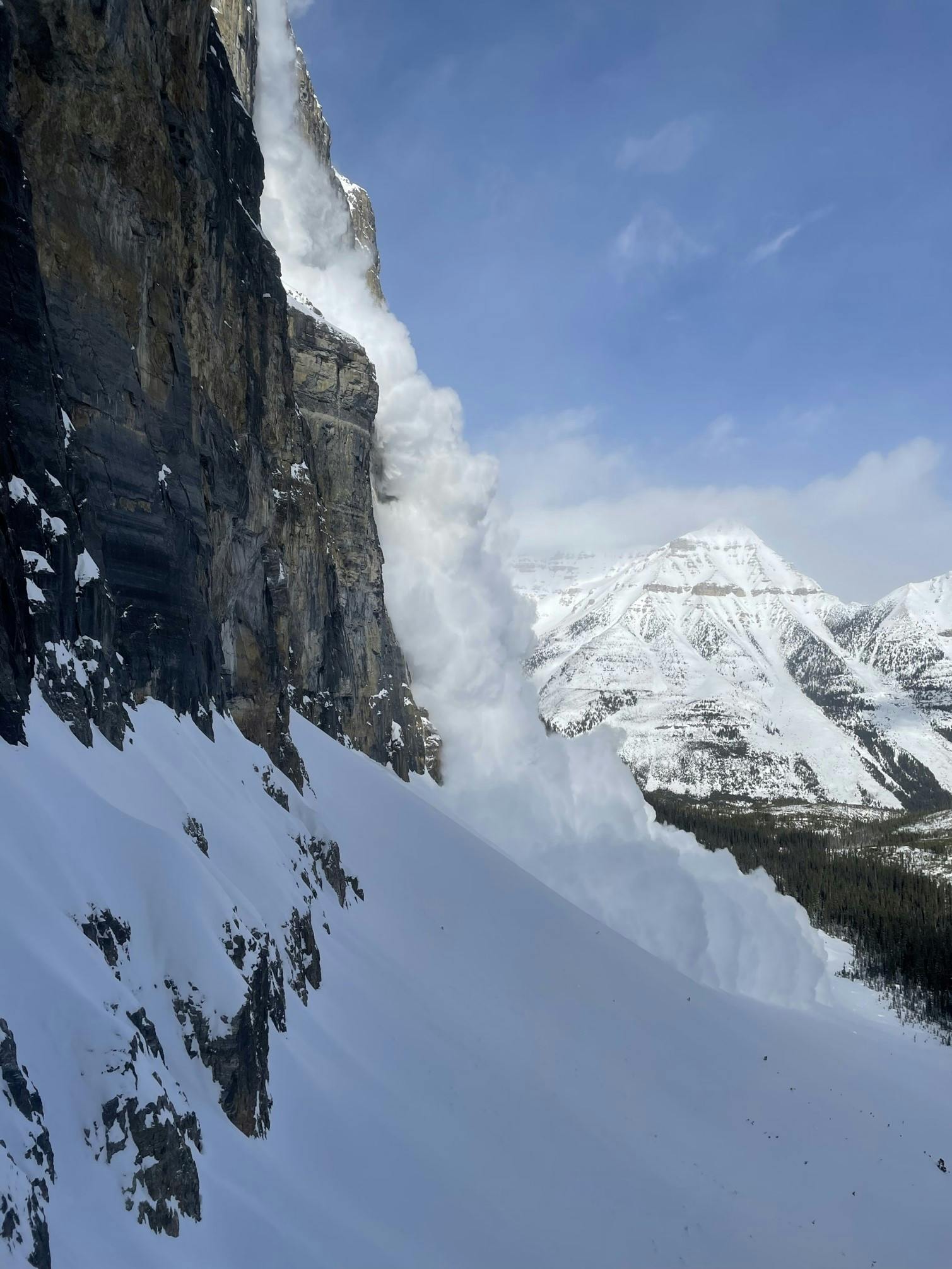
Photo: The Stanley Headwall ice climbs, from left: Killer Pillar to Nemesis, Suffer Machine to Man Yoga, Nightmare on Wolf Street to French Reality. The image also shows the avalanche start zones in red.
Suffer Machine to Man Yoga Sector
197m WI5+ / 242m WI5
ATES 4 (Extreme)
The Stanley Headwall is home to some of the Canadian Rockies hardest and finest mixed testpieces. Located in Kootenay National Park, it is generally accessed through Banff National Park. The approach to the Stanley Headwall can take 1.5–2 hours, depending on snow conditions, fitness level, and whether you're using skis or snowshoes. It hosts a long history of traditional and bolt-protected multi-pitch routes established over the past 35 years.
This sector hosts some of the more popular old and modern routes with Man Yoga and Suffer Machine. There have been numerous near misses with avalanches in this area.

Photo shows the Stanley Headwall upper valley
Popularity
- 15 people completed the survey
- 7% climbed it once
- 60% climbed it 2-5 times
- 33% climbed it over 6 times
Avalanche frequency
- 7% have not seen any avalanche debris
- 74% have seen avalanche debris on the climb or the approach less than 50% of the time
- 20% have seen avalanche debris on the climb or the approach more than half of the time
- 54% of respondents have witnessed an avalanche
Runout debris
- 90% saw avalanche debris on the approach
- 71% saw debris at at the base of the climb or lower
- 7% saw debris above the last pitch
- No one saw debris between the pitches
Notes on avalanche debris
- Length of debris varied from 50–200m
- People noted avalanche debris midway down approach slope to valley bottom and treeline
- Size 2, up to 1m deep
Trigger
- 100% natural
Contributing factors
- New snow amounts: 75%
- Winds: 75%
- Significant warming: 13%
Avalanche start zones
- 50% believe the avalanche started well above the climb
- 38% believe it started right above the climb
- 13 % were unsure where it started

An avalanche coming over the top of Man Yoga
Reported avalanches and incidents
- I’ve seen slides over Man Yoga, and lots of debris on the approach most times I’ve been in that area.
- I’ve seen avalanches over Man Yoga many times. It seems to be particularly bad for slides from above.
- I've seen numerous avalanches rip down between Suffer Machine and Man Yoga. Especially when there is some wind transport, I have seen size 2 loose dry come down from the cliff above. The biggest one I've seen in that area is closer to 2.5/3. Snow volume is unclear but it ran out pretty much to valley bottom.
- This was an involvement. We were on The Sound and the Fury (to the right of the Suffer sector). We bailed after two pitches from the big bowl when it was snowing approximately S2. As we were descending, multiple size 2 avalanches blew over us on rappel. The route named itself...
- I was hit with spin drift twice leading the last pitch of Suffer Machine from the top of the climb, but nothing serious or heavy enough to knock me or someone off.
- I saw a slab avalanche come down from above the route when approaching in the forest and bailed.
- I saw a natural size 2 or 3 loose dry from wind loading and/or new snow. Started above and to climber's left of French Reality. The powder cloud ran to other side of valley while we were climbing Fiasco .
- Large avalanche came from above Man Yoga while we were across the valley going to Nemesis.
- Narrowly missed being hit by an avalanche at the bottom of Man Yoga with a second slide coming down shortly after the first
Other Notes and summary
- My impression is that human triggering of the slopes underfoot can produce a size 2 in touchy conditions, but good terrain management can reduce the likelihood of this. I take fresh snow, and especially wind transport, very seriously in this sector. Once cornices get big enough in the spring, I take any inputs that could trigger them very seriously.
- This is where the approach slope seems to get steeper compared to Nemesis/Killer Pillar, and larger.
- Cracking and collapsing on early season approaches has turned me around 50% of the time.

The Stanley Headwall approach trails showing the ATES ratings.